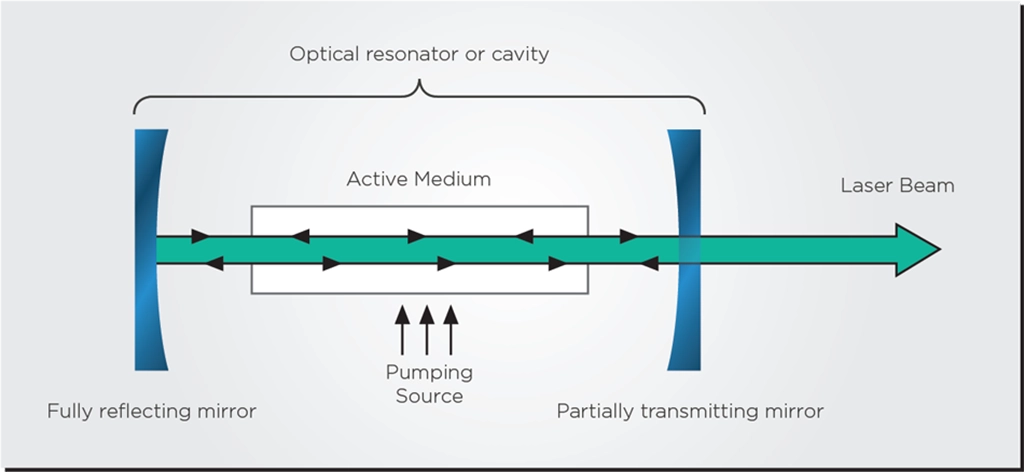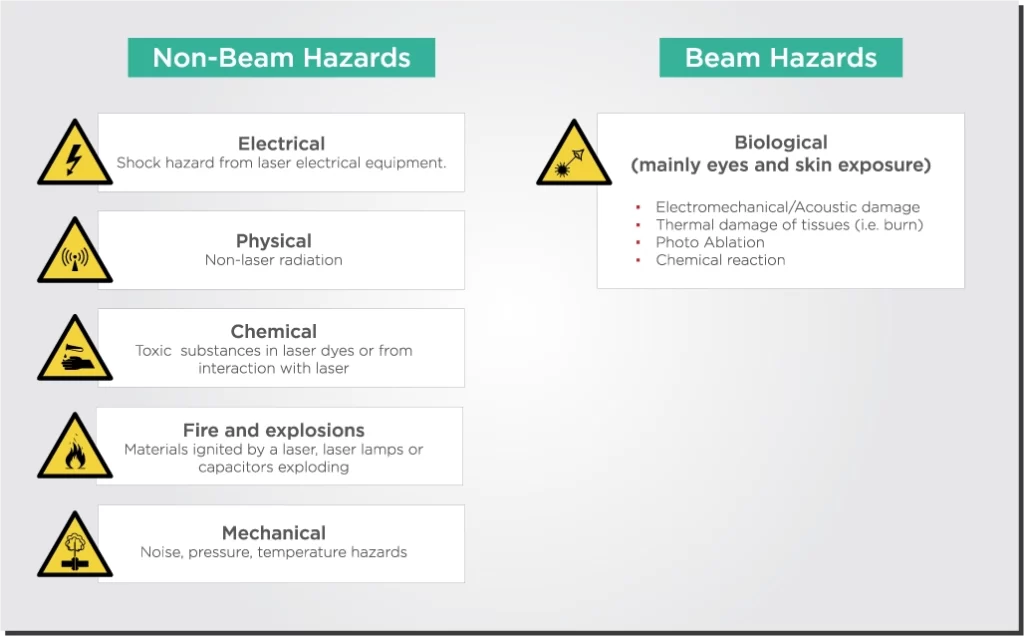Lasers have revolutionized our lives, bringing advancements in various fields, including industry, medicine, research, and…
Lasers have revolutionized our lives, bringing advancements in various fields, including industry, medicine, research, and entertainment. From laser pointers used for presentations to powerful laser-cutting machines, these devices have become integral to our modern world. However, it is crucial to acknowledge that lasers can pose potential risks and hazards if not handled carefully.
This article will summarize some of the basics of laser safety. We must emphasize that this article does not replace proper, comprehensive laser safety training. If you are going to work with lasers, please make sure to take the training provided by your company or educational institution.
Principles of Lasers
Before delving into laser safety, it is important to establish a foundation of knowledge regarding the basic principles of lasers and the various types available. The term laser stands for Light Amplification by Stimulated Emission of Radiation. It is an optical device that emits coherent, monochromatic, and intense light.

There are several types of lasers, each with unique characteristics and applications. Common types include gas lasers (e.g., helium-neon, carbon dioxide), solid-state lasers (e.g., Nd:YAG, ruby), semiconductor lasers (e.g., laser diodes), and dye lasers. Understanding the specific characteristics of the type of laser you will use enables a more comprehensive approach to laser safety.
Exploring potential hazards and safety measures
By their very nature, Lasers possess inherent hazards that require careful attention and precautionary measures. Failure to adhere to laser safety guidelines can result in serious injuries. Some potential hazards associated with lasers include eye injuries, skin burns, fire hazards, and even electrical and chemical hazards in some laser systems. The table below summarizes many of the common laser hazards.

The eyes are particularly susceptible to laser hazards, as even brief exposure to high-powered lasers can cause permanent damage. Therefore, using appropriate protective eyewear is crucial when working with lasers. Laser safety eyewear should have optical density (OD) ratings that match the laser’s wavelength and power output, effectively attenuating the laser beam to a safe level.
Controlling laser beams is another critical aspect of laser safety. Using beam shutters, beam dumps, and beam stops helps prevent accidental exposure to laser radiation. Proper alignment and focusing of lasers are essential to avoid unintended exposure. Moreover, establishing controlled environments, such as laser interlock systems and restricted access areas, ensures that laser operations are conducted safely and that individuals are protected from accidental exposure.
Regular maintenance and calibration of laser systems are crucial to ensure their safe operation. Adequate training and awareness programs should be implemented to educate personnel on laser safety practices and emergency procedures. Additionally, risk assessments should be performed to identify and mitigate potential hazards specific to each laser application.
Goldfinger and How NOT to Use Lasers
In our quest to unravel the importance of laser safety, let us take a lighthearted detour into the world of James Bond. In the iconic film “Goldfinger,” Bond finds himself in a precarious situation, strapped to a table with a laser slowly inching toward his noble parts. While the scene captivates us with its tension and suspense, it also serves as a comical reminder of the laser safety rules that Goldfinger blatantly disregarded.
First and foremost, Goldfinger’s choice of protective eyewear was utterly nonexistent. Goldfinger failed to equip himself and his minions with the necessary eye protection as the laser beam whirred closer to Bond. Moreover, Goldfinger’s complete lack of beam control left much to be desired. Unencumbered by beam shutters or safeguards, the laser roamed freely, putting Bond at risk and Goldfinger himself at risk. Proper beam control, including beam dumps and beam stops, would have ensured that the laser’s path remained precisely controlled and confined, avoiding unintended encounters.
Takeaways
As lasers continue to play an essential role in advancing technology, it is crucial to prioritize laser safety to protect the well-being of laser users and those around them. This safety knowledge includes
- Understanding the basic principles of lasers and the different types available,
- Recognizing potential hazards and implementing essential safety measures, such as wearing protective eyewear, controlling laser beams, and establishing controlled environments
- Fostering a culture of laser safety through proper training, maintenance, and awareness
